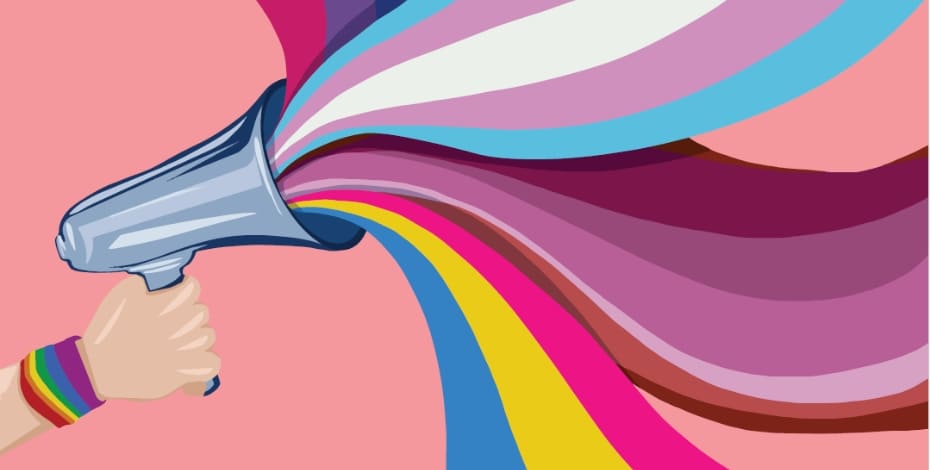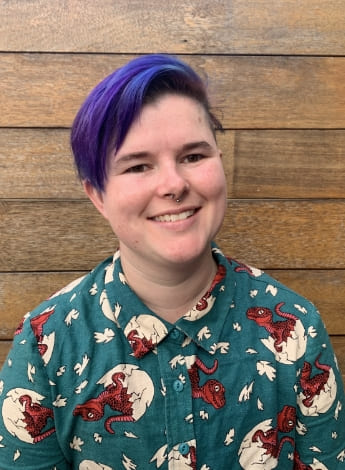
Australia’s LGBTQIA+ history

Holly Shuttleworth considers the historical background to the experiences and challenges facing LGBTQIA+ patients today.
An in-depth timeline of Australia’s LGBTQIA+ health and human rights, created by Dr Megan Ross offers a glimpse of the history behind the current experiences of the community.
For physiotherapists, an awareness of the political landscape of LGBTQIA+ rights can help them locate their role in advocating for and empowering their patients.
This is important because there are still many ways in which the LGBTQIA+ community continues to face discrimination.
Understanding today’s issues and the history that lies behind them allows physiotherapists to establish rapport and effectively treat these patients.
HIV/AIDS epidemic in Australia
The HIV/AIDS epidemic was one of the most traumatic periods for the LGBTQIA+ community, especially for gay men.
The first Australian case detected was in 1982 and the first death occurred in 1983.
Before AIDS was renamed, it was called GRID (gay-related immune deficiency), which led to hostility towards the gay community by many.
This was a time when the LGBTQIA+ community, along with sex workers, injecting drug users and HIV carriers, came together to create peer-led prevention and support.
The advocacy of all these groups laid the foundation for the national community-based HIV organisation Australian Federation of AIDS Organisations.
While HIV/AIDS is no longer considered an epidemic, it still casts a shadow over the community.
To this day, men who have had sex with other men and trans women who have had sex with men must abstain from sex for three months prior to donating blood due to HIV/AIDS concerns, despite the fact that all blood is screened for HIV/AIDS regardless of gender or sexual orientation and that PrEP (pre-exposure prophylaxis) medication reduces HIV transmission by 99 per cent.
The LGBTQIA+ community in the present day

Holly Shuttleworth
It wasn’t until after the 2017 postal survey that same-sex marriage was legalised in Australia.
Prior to this point, same-sex couples were unable to be legally recognised.
This had significant ramifications for many in the LGBTQIA+ community, ranging from issues with taxation to the more important matters of determining who is someone’s next of kin and who is considered ‘family’.
Imagine if your partner of 10 years had been in a car accident and was on a ventilator, with no brain activity, and the hospital calls their estranged parents to seek consent to withdraw care.
This was something that occurred throughout the LGBTQIA+ community because our relationships were not valued or recognised by the law.
It’s just one example of the systemic homophobia and transphobia that has existed within our healthcare system.
Gatekeeping and denying access to gender-affirming care such as gender-affirming hormone therapy or surgeries are also commonplace in the medical system.
Individuals seeking gender-affirmation surgery still need to get a letter from a mental health professional deeming them ‘ready’ for such surgery.
Gender affirmation surgery is generally only accessible out of pocket and even with top private healthcare cover, the gap can be costly.
Moreover, ‘female-to-male’ bottom surgery (phalloplasty) is rarely performed in Australia and only by a few surgeons.
In many states, including Victoria, there are no surgeons who perform phalloplasty.
Gender affirmation surgery is therefore only available to those privileged to be able to afford such expenses.
Some individuals resort to crowdsourcing the funding for their affirmation surgeries, often with success.
This is one of the ways in which the LGBTQIA+ community and its allies come together and support one another.
Following the marriage equality postal survey, then prime minister Scott Morrison and the Liberal National Party expressed concern that LGBTQIA+ rights were infringing on religious freedoms and introduced a Religious Discrimination Bill to Parliament.
In its original form, it permitted religious schools and hospitals to discriminate against students, teachers, patients and practitioners on the basis of their sexuality or gender.
The bill never passed Parliament as it was still undergoing significant amendments when the Australian Labor Party won the 2022 election.
Impact of minority stress on health
Legislation and rhetoric about the rights of LGBTQIA+ people and ongoing discrimination in the workplace, educational institutions and society all contribute to minority stress.
Minority stress can lead to worse physical health.
We know that systemic inflammation, which contributes to a number of physical illnesses, can be triggered by isolation, shame and experiences of social threat, all of which are encountered by the LGBTQIA+ community (Dickerson 2004).
LGBTQIA+ individuals also experience higher rates of mental illness, psychological distress and suicidality.
LGBTQIA+ people in general are up to five times more likely and transgender people up to 15 times more likely to attempt suicide compared to the cis/heterosexual population.
Bills that create exemptions for organisations, businesses, hospitals and educational institutions to discriminate in the name of religious freedom have serious ramifications.
LGBTQIA+ students, staff and patients would be forced to hide who they are, which we know is a contributing factor to poor mental health in an already at-risk community.
It also sets a dangerous precedent in healthcare.
Existing sex discrimination laws contain exemptions for religious organisations and doctors continue to deny care to the LGBTQIA+ community in spite of laws against discrimination relating to one’s gender or sexual orientation.
Where can we go from here?
In order for this to change, society must change.
LGBTQIA+ individuals are less likely to access preventive healthcare, are more dissatisfied with treatment and present at later stages of disease compared with the general population.
In terms of physiotherapy, an Australian study written by a member and a past member of the LGBTQIA+ advisory panel, Dr Megan Ross and Dr Jenny Setchell, showed that LGBTQIA+ individuals faced challenges when seeking physiotherapy treatment.
These included assumptions about gender and sexuality, explicit and implicit discrimination, poor knowledge of specific health needs and often discomfort regarding the proximity of bodies.
The last was particularly salient for transgender and gender-diverse people.
This led to non-disclosure of their gender identity or medical history where it may be relevant to the presenting condition—for example, any previous surgeries, hormone replacement therapy or wearing of binders, all of which can lead to musculoskeletal complaints.
As practitioners we need to be aware of the additional challenges that members of the LGBTQIA+ community face and to be proactive in our practice.
It is our responsibility to address any biases we may have and to provide an inclusive healthcare environment for everyone.
For example, we can ensure that staff are trained in providing inclusive care, put systems in place to record patients’ pronouns and chosen names as well as their legal names and create an inclusive physical environment (such as one with an all-genders bathroom).
For ideas on how to do this, keep an eye out for information from the LGBTQIA+ Advisory Panel.
Course of interest:
LGBTQIA+ affirming physiotherapy--part A
© Copyright 2024 by Australian Physiotherapy Association. All rights reserved.





